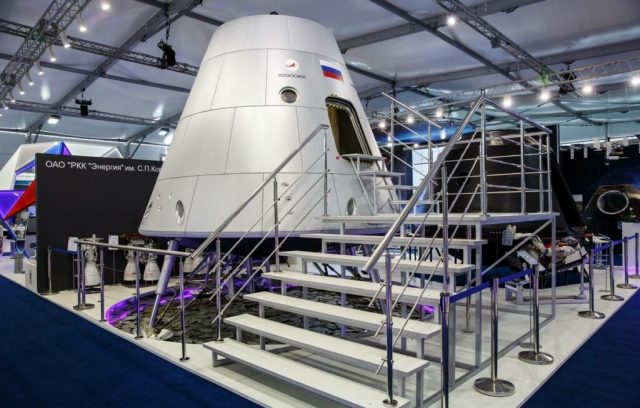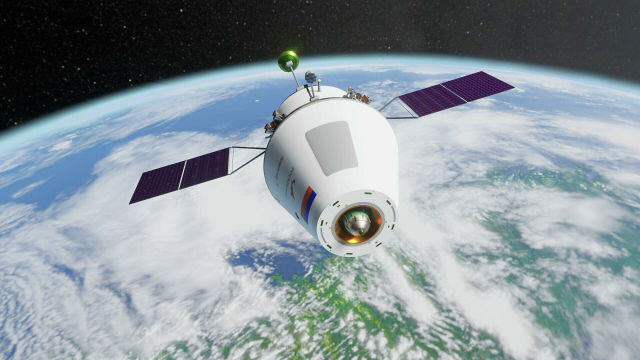According to the statement of the head of "Roscosmos" Dmitry Rogozin, the timing of the tests of the ship "Eagle" may be revised. The reason is the absence of a superheavy rocket.
The possible postponement of the testing of the new Russian spacecraft was reported by RIA Novosti. According to the head of the space department Dmitry Rogozin, the first unmanned launch, as before, they want to hold in 2023. "Another thing is that the tests of the ship can be stretched in accordance with a more rational schedule, taking into account the fact that the standard rocket for the Eagle ship is a superheavy class rocket, and not an Angara," he said.
Rogozin recalled that the "Eagle" is being created as a "lunar" ship designed for flights into deep space. Thus, it will not be possible to fully implement the project without a superheavy carrier.
At the same time, the Eagle can be launched using an Angara rocket to the ISS, and in the future to a promising Russian station known as ROSS. According to previously announced plans, it can be created in the second half of the decade. Russia may withdraw from the International Space Station program by that time.
 |
| The layout of the Eagle. |
| Source: ©Roscosmos |
The development of the ship "Eagle", formerly known as "Federation", began in 2009. The date of the first manned flight was previously called 2025.
The "Eagle" is created reusable. The number of its crew is up to six people, the payload weight is up to 500 kilograms. The device will be able to stay in autonomous flight mode for up to 30 days.
Last year it became known that a more compact version could be developed on the basis of the ship, which received the designation "Eaglet". It will be five tons lighter than the basic modification and is designed for flights to the moon. The mass of the ship was reduced by reducing the number of life support systems, which, in turn, is due to a reduction in the number of crew members to two. As Rogozin noted last year, they want to launch the Eaglet for the first time closer to 2028.
The Eagle can be called a conditional analogue of the Crew Dragon spacecraft, or Dragon V2, which has already been commissioned. At the same time, the United States is actively creating fundamentally new fully reusable space systems.
Recall that in August, SpaceX installed the Starship SN20 spacecraft on the Super Heavy Booster 4 accelerator, thus assembling the largest rocket ever. A concept similar to Starship is being worked out by the American Relativity Space, which presented the appearance of its Terran R system this year.

